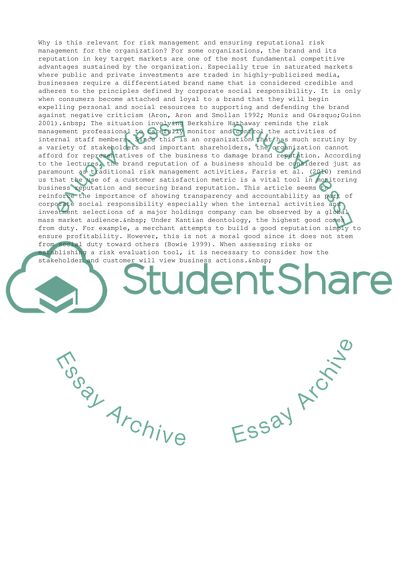Cite this document
(The Portfolio of Current Issues in Risk Management Coursework, n.d.)
The Portfolio of Current Issues in Risk Management Coursework. Retrieved from https://studentshare.org/management/1402433-the-portfolio-of-current-issues-in-risk-management
The Portfolio of Current Issues in Risk Management Coursework. Retrieved from https://studentshare.org/management/1402433-the-portfolio-of-current-issues-in-risk-management
(The Portfolio of Current Issues in Risk Management Coursework)
The Portfolio of Current Issues in Risk Management Coursework. https://studentshare.org/management/1402433-the-portfolio-of-current-issues-in-risk-management.
The Portfolio of Current Issues in Risk Management Coursework. https://studentshare.org/management/1402433-the-portfolio-of-current-issues-in-risk-management.
“The Portfolio of Current Issues in Risk Management Coursework”, n.d. https://studentshare.org/management/1402433-the-portfolio-of-current-issues-in-risk-management.


